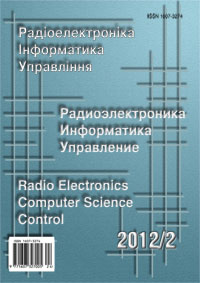PLATE-FINNED HEAT SINK DESIGN
DOI:
https://doi.org/10.15588/1607-3274-2012-2-9Keywords:
plate-finned heat sink, thermal model, optimization ratio, mass minimization, mass and size characteristics.Abstract
The thermal model of plate-finned heat sink is formed and described. The mathematical model of operability domain ellipsoid is created by approximating its borders. The optimization problem of heat sink mass is solved by Lagrange multipliers method. Hyperbolic model of the target function is used. The ratios for optimum mass of heat sink are found. The algorithm of heat sink design is developed. The initial approximation of standardized heat sink parameters is used. Thermal resistance is found by the numerical simulation in the systems engineering analysis. The mass and size parameters of finned and plate-finned heat sinks are compared. It is found, the optimization of finned and plate-finned heat sinks allows to reduce their weight by 2–3 times, and the volume is increased by 2 times. Optimized heat sinks have similar values of volumes; the mass of finned heat sink is less on 10 %. The using of plate-finned heat sink allows to increase the thickness of the fins on 50 % and to improve manufacturability of heat sinks elements.Downloads
Published
How to Cite
Issue
Section
License
Copyright (c) 2014 Y.V. Ogrenich

This work is licensed under a Creative Commons Attribution-ShareAlike 4.0 International License.
Creative Commons Licensing Notifications in the Copyright Notices
The journal allows the authors to hold the copyright without restrictions and to retain publishing rights without restrictions.
The journal allows readers to read, download, copy, distribute, print, search, or link to the full texts of its articles.
The journal allows to reuse and remixing of its content, in accordance with a Creative Commons license СС BY -SA.
Authors who publish with this journal agree to the following terms:
-
Authors retain copyright and grant the journal right of first publication with the work simultaneously licensed under a Creative Commons Attribution License CC BY-SA that allows others to share the work with an acknowledgement of the work's authorship and initial publication in this journal.
-
Authors are able to enter into separate, additional contractual arrangements for the non-exclusive distribution of the journal's published version of the work (e.g., post it to an institutional repository or publish it in a book), with an acknowledgement of its initial publication in this journal.
-
Authors are permitted and encouraged to post their work online (e.g., in institutional repositories or on their website) as it can lead to productive exchanges, as well as earlier and greater citation of published work.






